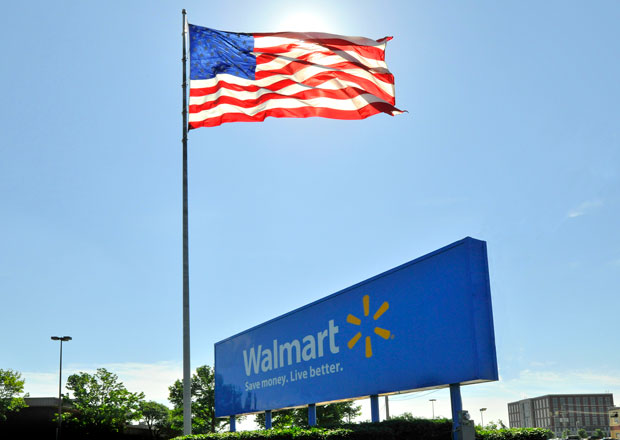Walmart on Tuesday announced free one-day delivery for 220,000 of its most-frequently purchased items.
The service will be available first in Phoenix and Las Vegas, because “these locations are major metro markets served by our fulfillment center in Southern California where we have a high volume of free two-day shipping orders, and where we expect strong customer adoption of our NextDay delivery offering,” a Walmart spokesperson said in a response provided to the E-Commerce Times by company rep Jaeme Laczowski.
NextDay Delivery soon will serve Southern California customers as well, and it will roll out to 75 percent of the population of the United States, including 40 of the top 50 major metro areas, by year end.
“It will cost us less to deliver orders the next day because eligible items come from a single fulfillment center located closest to the customer,” the Walmart spokesperson said.
Getting a Jump on the Competition
“We’ve done extensive work to understand our customer purchase data market-by-market across the country, to uncover the items customers need most frequently and most quickly,” the spokesperson added. “This data has helped us stock the right products in the right fulfillment centers, close to where our customers live.”
Orders will ship in the minimum possible number of boxes, “in contrast to online orders that come in multiple boxes from multiple locations, including some that might require air shipping,” the spokesperson noted.
“Wouldn’t it be great if I could just go to the store and see what I need and buy it the same day? Oh, wait” quipped Rebecca Wettemann, vice president of research at Nucleus Research.
Still, “it’s good that Walmart is doing this now,” she told the E-Commerce Times. “The majority of consumers are still used to buying consumables like paper towels, toilet paper and the like at a store rather than paying for Amazon Prime delivery. This gives Walmart an opportunity to capture that business before it leaves its stores.”
How NextDay Delivery Works
Customers can access the NextDay Delivery section at Walmart.com if the service is available in their area, to view and select items available for free next-day delivery. Everything in the cart must be eligible for next-day service, and the minimum order is US$35.
Orders consisting of a mix of items for NextDay and two-day delivery automatically will qualify for two-day shipping, the Walmart spokesperson said. If the order consists of at least $35 worth of qualifying items, the customer will be notified which items in the mix do not qualify and can opt to save them for later.
The specific assortment of items available for NextDay delivery depends on the customer’s location. There is a cut-off time, which varies by location, but as a general rule, most customers who place orders by 3 p.m. local time will receive them the next day.
Butting Heads With Amazon
Amazon has offered Prime members in at least 500 cities and towns throughout the U.S. free same-day delivery of more than 1 million items since 2015. Same-day and one-day delivery of some items has been available nationwide since 2017.
Amazon will spend $800 million to make one-day shipping the default for Prime members. The default currently is two days.
“Walmart is definitely playing catch-up,” observed Ray Wang, principal analyst at Constellation Research, “but this move helps make up for lost time.”
Amazon this year will sell to 47 percent of the U.S. e-commerce market, while second positioned eBay will reach 6.1 percent and third-placed Walmart 4.6 percent, according to eMarketer.
Walmart will give Amazon a run for their money, Wang told the E-Commerce Times, “but it will take some time, as Amazon has better coverage and distribution.” The fact that Walmart does not require membership is the game-changer.
The next-day shipping feature could cost Walmart $70-75 million, UBS has estimated.
“Walmart still has a ways to go to make their offer as comprehensive as Amazon,” remarked Coye Nokes, a partner at OC&C Strategy Consultants.
Once Walmart’s next-day delivery is established, “it is possible that both expansion of product offering and increased speed — same day — will be possible, likely with limitations on product availability and region as they announced,” Nokes told the E-Commerce Times.
Dust Beneath the Giants’ Feet
“The investments required to keep pace will hasten the demise of more store-based retailers, and result in more consolidation of retailers that don’t have the cash on their own to play in this high-stakes game,” noted Don Davis, editor at large at Internet Retailer.
The bigger online retailers are scraping by, he told the E-Commerce Times.
“Look at the red ink flowing at Overstock, Wayfair and Blue Apron,” Davis said. “Stitch Fix is a notable exception.”
Still, 342 of the top 1,000 leading etailers exceeded Amazon’s 20 percent online growth rate in 2018, Internet Retailer found. The fastest-growing group of Top 1,000 retailers are those ranked 401-600.
“Retailers making money online tend to be smaller and midsized privately held companies where the management is closely involved in offering a unique product or service,” Davis pointed out, “but that’s hard to scale and still make money.”
With Amazon’s “relentless expansion into new categories” and its ability to match anything it wants, more midsized etailers will “run out of cash and look to sell themselves to strategic buyers like Walmart,” he predicted, “which has already bought several Web-only retailers that were struggling to make a profit.”
























































Social Media
See all Social Media